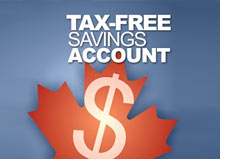
Lou Salvino
TFSA 101: Managing Your Tax-free Savings
11/4/2011

(NC)—A recent survey by ING Direct finds many Canadians don't understand the basic rules of the tax-free savings account. The majority of Canadians indicated they have a vague idea (37%) or don't understand how the TFSA works (14%), and many Canadians were not able to properly identify who was responsible for tracking withdrawals and contributions or whether or not TFSA contributions resulted in a tax deduction.
To ensure you're taking full advantage of your tax-free savings account and not being penalized for saving, here are some dos and don'ts to keep in mind when managing your TFSA:
Do Keep Track of Your Own Contributions and Withdrawals - One of the benefits of a TFSA is the ability to re-contribute money you've withdrawn from your account, though not until the following year. If you're making multiple contributions to and withdrawals from your TFSA, it's important to keep records of your transactions so you aren't charged a penalty for over contributing to your account.
Remember that although the government will determine your remaining available TFSA contribution limit for the coming year when you file your tax return, it is your responsibility to track your withdrawals and contributions so you don't exceed your annual limit.
Don't Treat Your TFSA as a Regular Savings Account - Treating your TFSA as a regular savings account can not only result in over-contributions from the constant withdrawals and deposits, but you also lose out on the benefit of compound interest—interest that is also tax-free.
Do Manage Multiple TFSAs Wisely - Over a quarter of Canadians (27%) think you can only have one TFSA, but Canadians can have TFSAs with more than one financial institution. Keep in mind the annual contribution limit is $5,000 per year, not per account, so with multiple TFSAs it's even more important to keep detailed records of contributions and withdrawals so you don't exceed your limit
Do Focus on the “Tax Free” Part, Not Just the “Savings Account” - The term tax-free “savings account” is something of a misnomer since Canadians can hold a variety of investments within a TFSA, including GICs, mutual funds, ETFs and stocks and bonds.
A majority of Canadians (47%) have their TFSA funds invested in a savings account, followed by mutual funds (19%), GICs (13%) and stocks and bonds (10%). To get the best bang for your buck, look for investment options with low-fees and no commissions. Because the money in your TFSA is earning interest tax-free, you won't have to pay income tax on the earnings you make through these various investment products.
Do Understand the Tax Implications of a TFSA - Over a third of Canadians (35%) said they were unsure whether or not they receive a tax deduction for contributions to a TFSA, while 8% believe they do. Unlike an RRSP, contributions made to your TFSA don't result in a tax deduction.
One in 10 Canadians believes they have to pay tax when withdrawing funds from a TFSA, while a third of Canadians said they weren't sure. Contrary to RRSP rules, you don't have to pay income tax when you withdraw funds from your TFSA since contributions are made with after-tax dollars. In addition, TFSA withdrawals don't affect your ability to qualify for federal benefits, so you're not penalized for saving.
www.newscanada.com




























